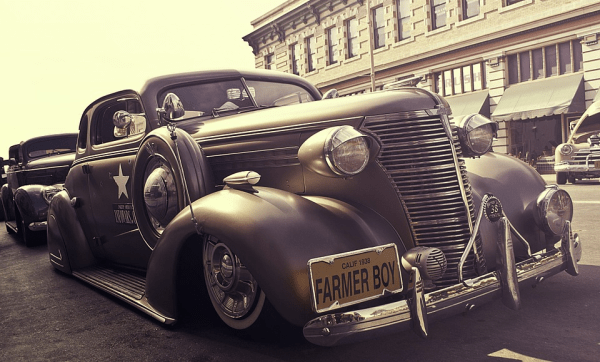Every car owner can call his car a ‘classic,’ no big deal. While that is true, in the context of car lending and insurance, there are specific things to consider when claiming your precious car as such.
The definition of a classic car is a fluid one, and there is no definitive answer to the question, “What makes a car classic?” Generally, car fans believe that classics are old-age cars with timeless design, technological value, and sufficient historical interest that make them worth restoring for leisure or display purposes in museums and car shows.
For car enthusiasts and insurers, the car’s age and its nostalgic and historical values are keys to qualifying for a classic car title. You may want to check out a classic car show to know which cars are classic.
HOW OLD IS ‘OLD’?
Although most car enthusiasts would say that the “classic car” title applies to automobiles over 20 years old, the moniker “classic” is still vaguely applied to any old-age car. The terms “classic,” “antique,” and “vintage” are all used interchangeably in the motoring world. It may be because insurance firms and car organizations provide their regulations and classifications that most often overlap between these terms. In addition to that, some states have rules to determine classic automobiles in terms of age.
Maryland, for example, considers vehicles 20 years and above “with historical value.” In West Virginia, cars that are 25 years old in the current year are eligible for a classic car license plate. Michigan requires a “historical” vehicle to be 26 and above years old, which must be owned exclusively as a collectible. These vehicles must also be used solely for club events, cavalcades, and car shows.
On the other hand, the Classic Car Club of America (CCCA) provides a list of cars that it recognizes as ‘classics.’ These cars, described as “fine” and “distinctive” by the organization itself, are built from 1915 to 1948, either built by American or foreign manufacturers.
However, most recent car shows feature cars produced in the 1980s and even early 1990s and are classified “classic vehicles.” Such vehicles include 1949 Ford, Chevrolet Bel-Air, Ford Model T, Dodge Charger, and Ford Deuce Coupe.
CAR CLUBS’ TAKE ON CLASSIC CARS
Delicate design, high engineering standards, superior artistry – these are the three qualities donned by every classic car on CCCA’s list. Therefore, the organization supports the preservation of these select cars recognizing their nostalgic and engineering value in their respective era.
The CCCA deems a car ‘classic’ based on the following factors:
1. engine displacement
2. custom coachwork
3. luxury accessories like power brakes, power clutch, and automatic lubrication systems
For the record, the CCCA approximates 1,366,843 “American Classics” produced all in all.
As for the Antique Automobile Club of America (AACA), the organization determines 25 years old or older “historic” automobiles. These vehicles were built in factories and specially designed and produced for public transport on roadways and highways. AACA’s list includes vehicles primarily manufactured between 1925 and 1942.
CLASSIC CARS ACCORDING TO LENDERS AND INSURERS
Classic cars are a beauty, and purchasing one is as thrilling as it gets. There is simply something unique and distinct about these automobiles – the sound, that nostalgic ‘feel,’ and the overall aesthetics are more than enough to melt a car enthusiast’s heart. When planning on buying or selling one, it wise to know from the experts themselves what “classic car” really means for them.
Some car insurers and lending companies might have strict conditions to meet when recognizing a car as a classic. These conditions may include risks involved in how they are used, like off-roading or driving the classic vehicle for daily transportation.
However, only a handful of companies deal with classic cars, so finding one specializing in this type of purchase can be an effort. In addition, you might want to go over the details of your specialized loan and insurance policy before throwing in cash for your coveted classic car.
REGISTRATION AND INSURANCE
For insurance and registration, the usual classic car’s age is at least 20 years old, but not more than 40 years. It is also crucial that the vehicle retains its fundamental ‘essence’ with rigorous adherence to its original design when doing restorations. This means that the car gets to keep the same kind of materials used in the interior and the engine.
To be a classic car means no distinct modification nor modern alterations and touches. If you plan on registering and insuring your classic car, you may want to check your current state’s laws and specific guidelines.
TAKEAWAY
There are only a few notable points that you need to remember about classic cars. The first one is that they should be old, approximately 15 – 40 years. The second one is that this ‘age range’ may vary depending on the insurance company, car club, and state or country. Thirdly, the cars must represent the technological and historical interests and values of their era. Lastly, classic cars must remain precisely the same way they were first built with no substantial changes and modifications during restorations. Nevertheless, if you dare call your car “classic,” then classic it is!
